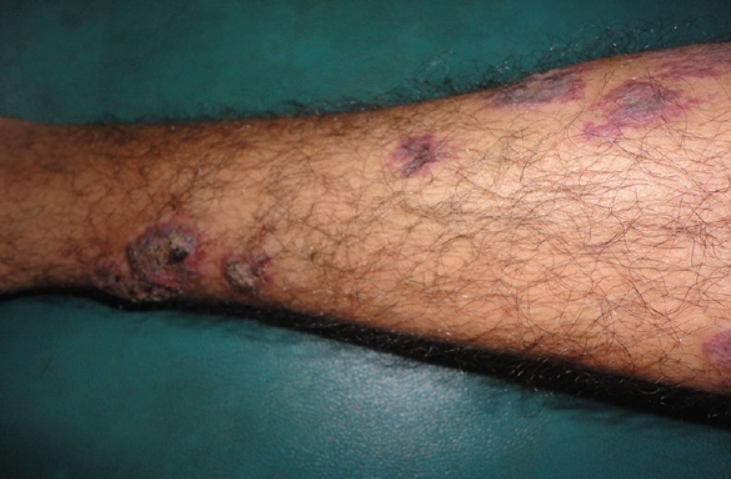Verrucous hemangioma is a congenital verrucous lymphovascular malformation characterized by gradual and progressive development of hyperkeratosis on the surface. ICD-10 code: D18.0
It typically manifests from birth, sometimes in childhood, and rarely in adults. The prevalence is unknown. Because of its clinical similarity to localized angiokeratoma, misinterpretation and misdiagnosis are possible.
The etiopathogenesis is not well understood. Somatic mutations in MAP3K3 are suspected, but no familial cases have been reported.
In the early stages, the disease is characterized by patches or flat papules and plaques with clear borders, irregularly shaped, pinkish red in color, often with a bluish tinge, ranging in size from 5 mm to 5-8 cm. Over time (several months to years), the rash elements thicken into large plaques or nodules with the appearance of hyperkeratosis and massive gray or occasionally brown deposits on the surface, acquiring a deep bluish-red color. A purplish-violet halo and small hyperkeratotic flat papules or patches may be seen in the periphery.
Single eruptions are more common, although multiple eruptions coalescing into large patches have been reported. An eruptive form has also been described. Lesions are typically unilateral, although cases of linear and serpiginous configurations have been reported. In the vast majority of cases, the affected areas are localized to the lower extremities (feet, toes, shins, thighs), less commonly to the trunk and upper extremities. There have been rare case reports of eruptions in the oral mucosa and genital area.
The disease has a progressive course with slow spread of the rash and its size. Complications such as ulceration, bleeding, and secondary bacterial infection are relatively common. Spontaneous resolution of the rash has not been observed.
- Angiokeratoma
- Verrucous epidermal nevus
- Verrucous carcinoma
- Lymphangioma
- Angioma serpiginosum
- Infantile hemangioma
- Cobb syndrome
To prevent recurrences, deep surgical excision is recommended. Positive results have been reported with laser therapy (dye lasers, Nd-YAG, CO2 lasers).

